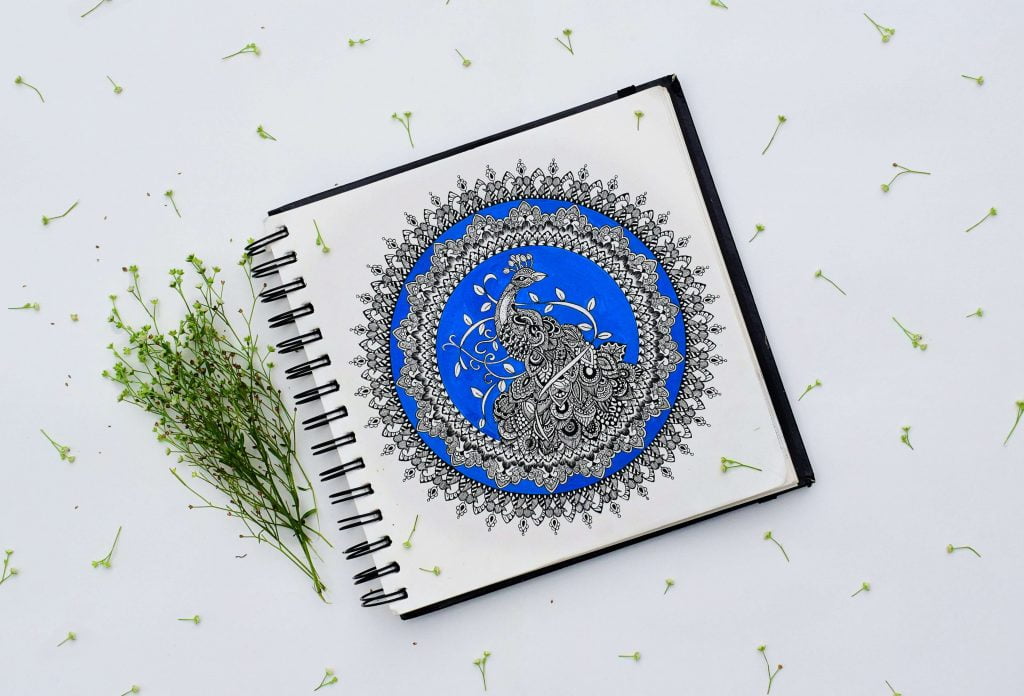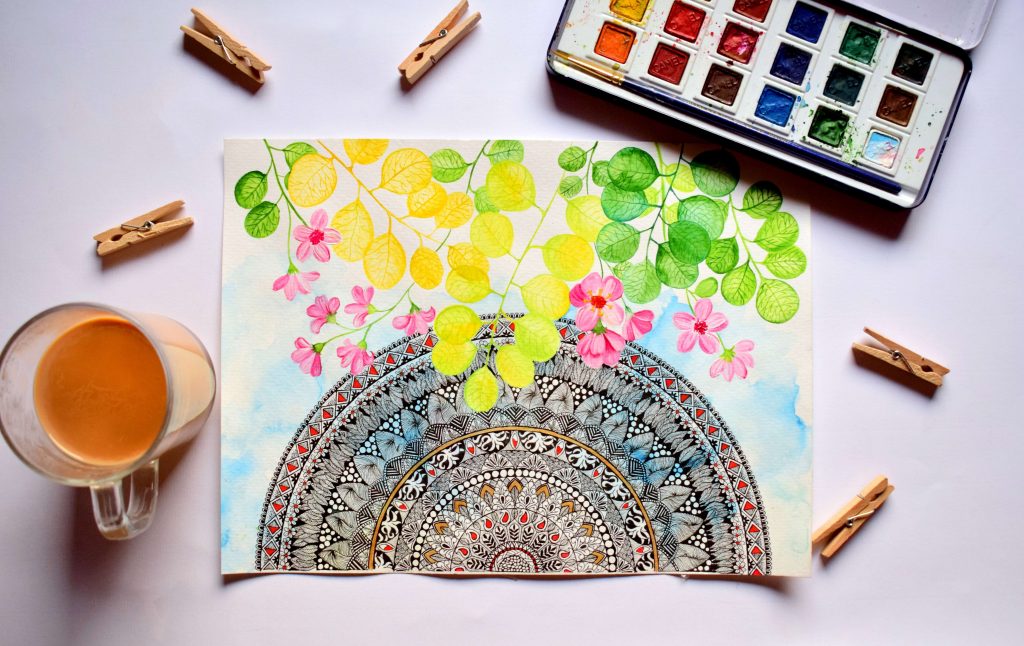What is Mandala meditation?
Mandala meditation is a meditative practice that involves the use of Mandalas.
The word mandala means “circle” in Sanskrit. Circles have been acknowledged as powerful symbols in numerous cultures. You can see them widely across religions as sacred symbols like halos.
Mandalas have been used over long periods of time by the Tibetan and Indian religions of Hinduism and Buddhism to facilitate meditation. These sacred circles known as mandalas have also been incorporated into other religions such as Taoism and Christianity. Mandalas are often seen as a symbol of the universe and are believed to serve as a means to spiritual enlightenment.
Mandalas are usually paintings or drawings. In some instances, they could also be temporary creations made out of different elements, like sand mandalas. These temporary mandalas are usually deconstructed and released ceremoniously after they have served their purpose. The mandala circle is filled with symbols and shapes and these are usually represented in symmetrical patterns in bold colours.
“Most mandalas have an intuitive, irrational character and, through their symbolical content, exert a retroactive influence on the unconscious. They, therefore, possess a “magical” significance, like icons, whose possible efficacy was never consciously felt by the patient.”
— Carl Yung, Mandala Symbolism
How To Do Mandala Meditation?
Meditation is a practice that requires deep concentration. This means that before using a Mandala, it’s important to find a quiet and calm place to sit and relax, where you will not be disturbed. Once you are there, try to get comfortable and absorb the atmosphere around you by being “in the moment”. Close your eyes and focus on your breath for 5 to 10 minutes to find that inner tranquillity.
When you are relaxed, follow the steps:
- Place your Mandala on the floor or on the table in front of you, depending on the place you’ve chosen for your meditation practice.
- During the practice of Mandala meditation, make sure to breathe with your abdominals, slowly and deeply.
- When looking at your Mandala, try to relax your eyes so that the image slowly goes out of focus. Then, concentrate on the image and observe its patterns and colours.
- If you feel any thoughts arise, do not push them away and do not judge them. Simply bring your attention back to Mandala.
- Mandala meditation can last anywhere from 5 to 15 minutes. Start slowly, and build up your practice time gradually.
- When you are done, slowly bring your attention back to the space and the world around you.
If you feel like you’d like to do a video Mandala meditation, try this one:
What Are The Benefits Of Mandalas?
Mandala meditation, as any kind of meditation practice, is known to have a lot of benefits for mental and physical health, including reduced anxiety and panic attacks, as well as better quality of sleep.
The act of colouring a mandala can also have a positive effect on your physical and mental health. According to a certified art therapist Marygrace Berberian, coloring can reduce anxiety and contribute to a sense of mindfulness. It can also help with improving the focus.
Improves Focus
Coloring Mandalas makes you focus deeply on the act of coloring and on all the shapes and patterns of the drawing. When coloring a Mandala, you can switch off the constant flow of thoughts and feel calm and centered.
Reduces Anxiety
The act of Mandala coloring can help with free-floating anxiety, as this meditative practice contributes to feelings of calmness and inner focus. If you look for other ways to decrease your anxiety levels, check out our article about the best-rated anxiety rings on the market.
Relieves Stress
Mandala coloring can help relax your mind and body by allowing them to detach from the events that happened during the day. This prompts the mind to engage in positive reflection.
If your stress is related to a particular person, try following our cutting cord meditation article.
Encourages Mindfullness
Mandala meditation promotes mindfulness as it brings your attention to the task at hand. You are being totally present as you observe colors and patterns.
What Is The Spiritual Meaning Of A Mandala?

As we’ve mentioned above, Mandala represents infinite wholeness, which brings us to our relationship to infinity and life beyond death. The symbol of circle can be observed through the moon the sun and the whole earth.
The spiritual meaning of a Mandala refers to the idea that life is never-ending. That’s why the use of Mandala for meditation purposes allows people to feel connected to the universe.
Mandala Meditation Quotes
Sometimes, the act of Mandala coloring meditation can be intensified by using inspirational quotes. Below, we’ve listed some of the great quotes you can use for designing your Mandala.
- “I am strong. I am powerful. I am beautiful”
- “All you need is within you”
- “You have power over your mind, not outside events. Realize this, and you will find strength”
- “Be fearless in the pursuit of what sets your soul on fire”
- “Ride the energy of your own unique spirit”
- “It’s always darkest before the dawn”
- “The only way is through”
- “All you need is you”
Mandala Meditation Coloring

Coloring Mandalas is a great hobby that can be used as a way to relax and express your creativity. With the process being meditative in its essence, it brings a state of calmness and peacefulness that is staying with your long after you finished coloring.
The act of coloring Mandalas carries many meanings, but it’s also a great piece of art. Mandalas are usually bright and aesthetically pleasing. Having one of these as a piece of decor will bring an element of awareness and consciousness to your house. It can remind you to slow down, breathe deep, and focus on the present moment.
